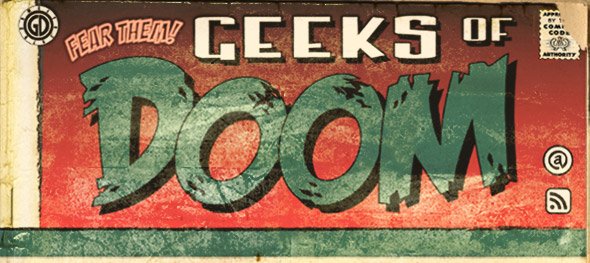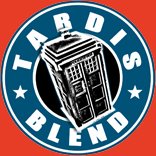
Giraffes on Horseback Salad
Salvador Dali, the Marx Brothers, and the Strangest Movie Never Made
Hardcover | Kindle
Written by Josh Frank and Tim Heidecker
Illustrations by Manuela Pertega
Publisher: Quirk Books
Release date: March 19, 2019
A screenplay thought lost forever penned by surrealist legend Salvador Dali which was to be a cinematic vehicle for The Marx Brothers has been made into a most strange yet passionately earnest graphic novel bizarrely entitled Giraffes on Horseback Salad: Salvador Dali, the Marx Brothers, and the Strangest Movie Never Made.
Subtitled Giraffes on Horseback Salad: Salvador Dali, the Marx Brothers, and the Strangest Movie Never Made, the hardcover from Quirk Books was created using the original script notes and using sketchbooks found by the writer Josh Frank, who adapted and fleshed out Dali’s story with Tim Heidecker.
Along with illustrator Manuela Pertega, the creative team tries their best to weave together a cohesive and structured narrative from Dali’s ideas, which were always creatively on a higher plane of reality, coupled with the zany rapid-fire pace of the Marx Brothers. While the end result is one of those classic “the parts are greater than the whole” scenario, it’s fun and certainly interesting to see this crazy project come to life after almost a century of having originally been thought up by the surrealist master.
Done in a lavish layout, with a nice overall design and chock full of opening essays and forewords that bring the reader along on Frank’s quest to find and bring Dali’s half-baked project to full fruition, Giraffes on Horseback Salad tells the story of Jimmy, a young businessman having problems professionally and personally in his life who gets drawn to the vague and ethereal Surrealist Woman, who bends and shapes the entire reality for the characters in the piece by her mere presence. She represents many things and is a supernatural force with her own checkered past. Ultimately, she literally brings out the color in Jimmy, who is intrigued and attracted to this mysterious being. Enter the Marx Brothers, led as always by the grease-painted mustachioed quicksilver wit of Groucho, along with his able and hilariously combative broken English-warbling brother Chico and mute yet absolutely pantomimic at every turn Harpo in tow. The famed trio not only help Jimmy connect with the Surrealist Woman, but ultimately help save the world when dire complications arise upon the Surrealist Woman’s sighting by everyone.
Pepper into that narrative the wild, crazy Salvador Dali-styled visuals with non-stop verbal one liners and typical Marxian “confusion conversations” between Groucho and Chico or Groucho and another character in the story and you pretty much have a sense of what Giraffes on Horseback Salad is. Still confused? So was I, but that’s clearly how everyone involved in this project wanted it, from Dali on down.
Dali’s work was mainly predicated on a kind of confusion purposefully. Though, make no mistake, he had a laser beam focus on what his visions were from imagination to canvas with a sprawling confidence every time, but clearly also with a kind of confusion at the core, which baffled his audience constantly and consistently and it almost became expected of him ultimately. Josh Frank makes sure the reader never forgets this whilst reading Giraffes on Horseback Salad. In fact, it’s that kind of philosophy that gives this kind of project a free pass of sorts, to be able to stretch boundaries as much as possible, while still keeping the story at the center. But yet, to to keep the center of the story, it’s asked upon, in a strange way, The Marx Brothers, who of course are a trio of characters who have made their legendary status by being off-center. What it does then, is that it almost creates two separate stories and tones within one story. And in doing so, it asks a lot of the reader in terms of not only what they see — visuals wavering from 1930’s-styled story panels in nicely done black and white, to wild splash and dash color sequences — but also in terms of what they read, going from self-consciously 1930’s-styled dialogue to the rat-at-tat machine gun wit coming from Groucho. This one-two punch will undoubtedly make the reader take constant pauses during the story to reflect, ruffle eyebrows, at what they are reading and seeing and then readjust and continue. It’s safe to say most readers will require a few reads of this story to make sense of it, not just in the broad strokes of it. And there’s even musical numbers that are also illustrated here, and even though one has to imagine the music, they are actually nicely done, keeping the soul and spirit of numbers that would have been in real Marx films like A Night at the Opera, Horsefeathers.
But clearly, the overall feeling is that there’s a lot taken on at once, trying too much to do everything here, but yet, it’s still clearly having fun. You get a sense of the joy and whimsy the writers wanted to inject throughout the surreal imagery of the visuals and the story and try to remain on top. Above all, they seem more fans of the Marx Brothers than Dali here, and the focus and intention is to be able to keep the reader engaged through the wit and antics of the Marxes than the illuminating yet static imagery throughout.
In fact, it seems to be the illustrations sometimes that make the proceedings wobble on the tightrope it’s on. Pertega does a great job with form and shadows and light and capturing Dali’s surreal paces where needed, but it’s the Marxes themselves that seemed to get the short end of the stick illustratively. Chico is the main victim of this; if he didn’t have his trademark hat and clothes on throughout the story, there are times he would have looked like any other pedestrian fringe character in the story. Not once does a reader get a feeing they are seeing Chico, even though the soul and style of the genuine article is there in terms of the dialogue. Groucho looks like himself for the most part, but that’s sometimes because of the luxury of him always having his trademark mustache sported throughout, which can give an artist the convenience of not having to render him perfectly all the time.
The biggest and strangest choice, possibly even stranger than this entire project, is the fact that Harpo is the odd man out here. Even though Josh Frank waxes passionately about his love of Harpo (even showing us a picture of himself dressed as Harpo for Halloween decades ago) and there is an essay from Harpo’s son Bill about the meeting his dad and Dali had in the 1930s which kind of spearheaded Dali’s idea to write this story, Harpo’s character is pretty much M.I.A. in Giraffes on Horseback Salad. While it’s fair and understandable to realize that taking a pantomimic mute like Harpo and trying to unleash him in a comic book form successfully and hilariously is almost impossible, Harpo is still scantly represented in the story. And even though he winds up becoming a key part of the story’s dénouement, it’s criminal how pages after pages go by in this tale with nary a glimpse of who for many people (and clearly Frank) remains their favorite Marx Brother.
Overall, this is the taste Giraffes on Horseback Salad leaves the reader upon completion, a myriad of “Why didn’t they do more here?” or “They should have done this” throughout. But still, even with the carping, it can’t be doubted that this is a fun and certainly intriguing to a fault read and curio that veers into crazy territories, but ultimately may not have enough to satisfy either a Marx Brothers fan, or a Dali fan or even a graphic novel fan. A huge Dali drawn A for effort and by no means not worth seeking out, Giraffes on Horseback Salad shows what could have been and also shows why it never was.








No Comments »
No comments yet.
RSS feed for comments on this post. TrackBack URL
Leave a comment